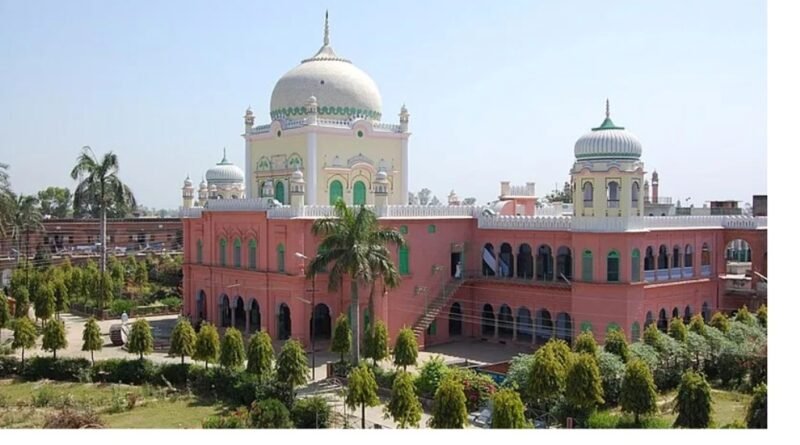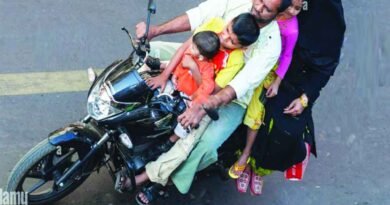Deobandis Arabising Indian Muslims in name of Islam—a culture war Barelvis fought for 150 yrs
While Barelvis never stressed on labelling local customs as ‘Hinduwana’, Deobandis focused on a puritanical version of Islam. Both aim to dominate a new ‘Islamic’ polity.
Majority of Indian Muslims follow the Barelvi school of thought, many others follow Deobandism and other sects. Growing up, I didn’t have much of an idea about schisms within the Muslim community. The Tablighi Jamaat, a non-political Deobandi missionary organisation, had been reaching out to Muslims since the 1920s to teach the ‘right kind of Islam’, preaching ideas like venerating shrines is shirk or sin of idolatry and should be avoided at all costs. It was only in the 1990s that I witnessed conflict at home when some of the family members went the Deobandi way — there were heated debates about whether or not certain rituals were prescribed by Islam.
That’s how I learnt that my family was a follower of the Barelvi version of Sunni Islam. In fact, there are people who follow neither denomination and many other diverse Islamic traditions exist in South Asia, I discovered.
The fundamental difference
Barelvi and Deobandi schools of thought originated in South Asia during the 19th century. Their religious-political rivalry is considered one of the most significant schisms within Sunni Islam and in the Muslim world. The most recent manifestation of this over-a-century-old rivalry has been the debate on the radicalism of the Deobandis — the alleged use of violence and terror, especially in Pakistan. The antagonism started from an ideological battle that saw influencing converts, propagating conflicted visions of the future with a desire to dominate the new ‘Islamic’ polity.
The Barelvi subsect emphasises the importance of the veneration of Prophet Muhammad and Sufi saints. Barelvis believe in celebrating the Prophet’s birthday and are known for using music and dance in their religious practices. They also believe in intercession through the last messenger of Islam and his family. More than two-thirds of India’s 17.2 crore Muslims prescribe to the Barelvi school and follow Islam enriched by its contact with fertile local cultures and marvel at Sufi traditions.
Whereas Deobandi is a revivalist movement that emphasises the return to the original practices of Islam — a back-to-basics approach to the faith. Deobandis focus on the study of Islamic texts and the promotion of Islamic education, particularly through madrasas. They reject the veneration of Sufi saints and emphasise strict adherence to Islamic law and practice. Deobandism rejects all scientific theories that are not integral to the study of the Quran and the Hadith. It also rejects any form of culture, tradition, or even etiquette that does not have its roots in Islam.
A culture war too
On ground, the most significant differences between the Deobandis and Barelvis are related to local customs and traditions. While the Barelvi school never stressed much on rejecting local customs or labelling them as “Hinduaana” and against the Islamic spirit, the Deobandi movement always focused on a puritanical version of Islam and began the Arabisation of Indian Muslims in the name of Islamisation.
Followers of the Barelvi school observe Eid Milad-un-Nabi, (the Prophet’s birthday) every year. However, influenced by the Wahhabism movement, which originated in the Arab world in the 18th century and is a subset of the broader Salafism, Deobandi Muslims began to disapprove Eid Milad-un-Nabi celebration, considering it an illicit religious innovation and calling it bid’ah. While Barelvi followers venerate shrines and the graves of their ancestors on Shab-e-Barat, Deobandis argue that the practice is shirk because it is not observed in the Wahhabi tradition in Arabia and should be banned in all parts of the world.
The two schools also have differing opinions on music. Barelvis observe a ritual called ‘group dhikr’, the synchronised movement of the body while chanting the names of God, and participate in qawwalis.
Deobandis, though, see most forms of music as haraam or forbidden. They have also exerted a cultural influence on Indian Muslims in various ways — earlier, women used to wear saris, dhotis, mangalsutras and even sindoor. Women in my family never wore a veil but used a black chaadar (sheet) to travel. Now we see more and more Muslim women donning the burqa or abaya after the Arabian tradition.
Khan vs Khan
During the 18th and 19th centuries when Muslim political power was declining in India, several new Islamic strains began making waves among the Muslim community in the subcontinent. They can be classified into two principal groups.
One, the ‘purifiers’. They attributed the fall of the Muslims in part to the corruption of the ummah (the Muslim community), particularly in the subcontinent, with the accretion of pagan rituals and philosophy and other ‘false practices’. They were often erroneously lumped together as the ‘Wahhabis’.
Two, the ‘modernists’. They reinterpreted Islam in light of a “modern” (Western) perspective, adhering to its science and philosophy. This approach was a direct result of British rule in India, as most educated, upper-class Muslims struggled with certain aspects of their faith when Western education, culture, and influence made inroads into the community. This category is perhaps best represented by Syed Ahmad Khan’s Muhammadan Anglo-Oriental College (now Aligarh Muslim University) cadres.
This milieu, which had its own wide spectrum of opinions and interpretations, marked the majority of Indian Muslims’ fight against both the supposed Wahhabism of the Deobandis (as well as the real Wahhabis) and the blasphemous modernism of Aligarh. Ahmad Raza Khan, Islamic scholar in Bareilly, emerged as the ‘founder’ of the Barelvi movement.
The Deobandis established their first madrasa, the Darul Uloom Deoband, in 1866 in Deoband to impart training in Deobandi Islam. A few decades later, Ahmed Raza Khan founded the first Barelvi school, the Jamia Razvia Manzar-e-Islam, in 1904 in Bareilly. Khan spent a lifetime writing fatwas. While it is believed that Barelvi Islam incorporates local culture, there has been a recent rise of radicalism in some regions. Pakistan’s far-Right extremist Islamic political party the Tehreek-e-Labbaik Pakistan (TLP), is an example.
While navigating the Deobandi-Barelvi rivalry, we forget a key important question: What is their aim? The rivalry is more about the desire to dominate the ummah. And their visions, though differing on the idea of a future Islamic epoch, are based on the glorious past of Islam. Though Indian Muslims may feel more comfortable with the Barelvi sect, since it allows them to stay connected with their culture and traditions, what role does the denomination play in assimilating them into the mainstream?
Amana Begam Ansari is a columnist and TV news panelist. She runs a weekly YouTube show called ‘India This Week by Amana and Khalid’. She tweets @Amana_Ansari. Views are personal.
(Edited by Humra Laeeq)
Source: The Print




